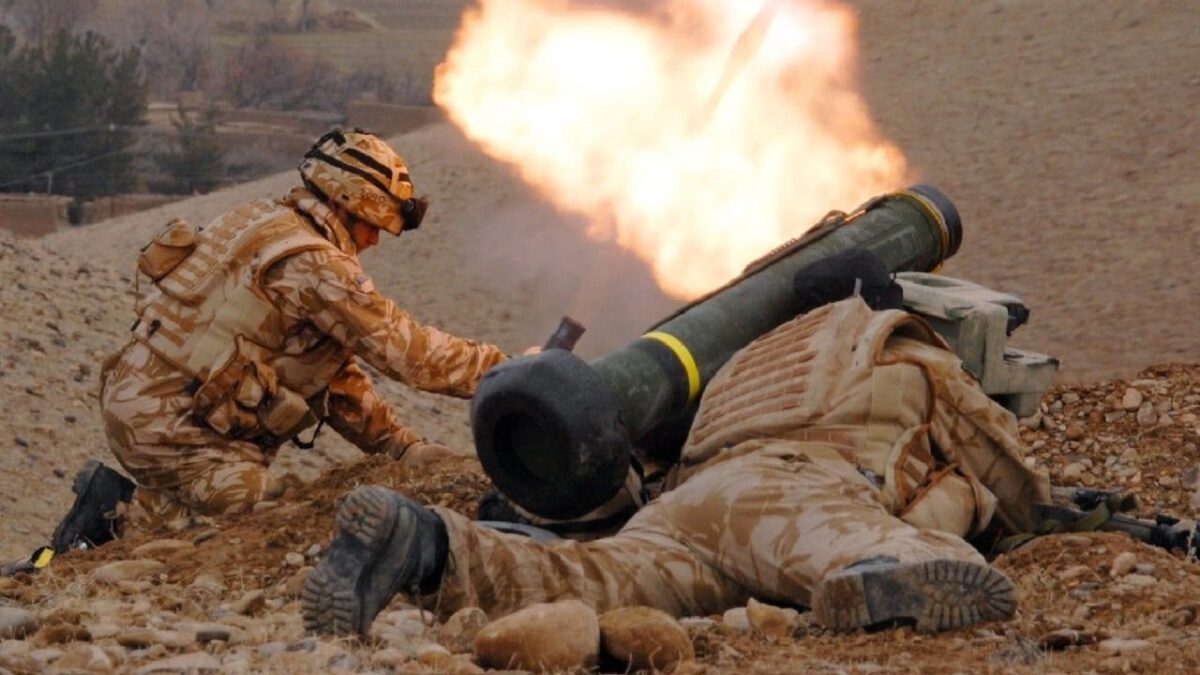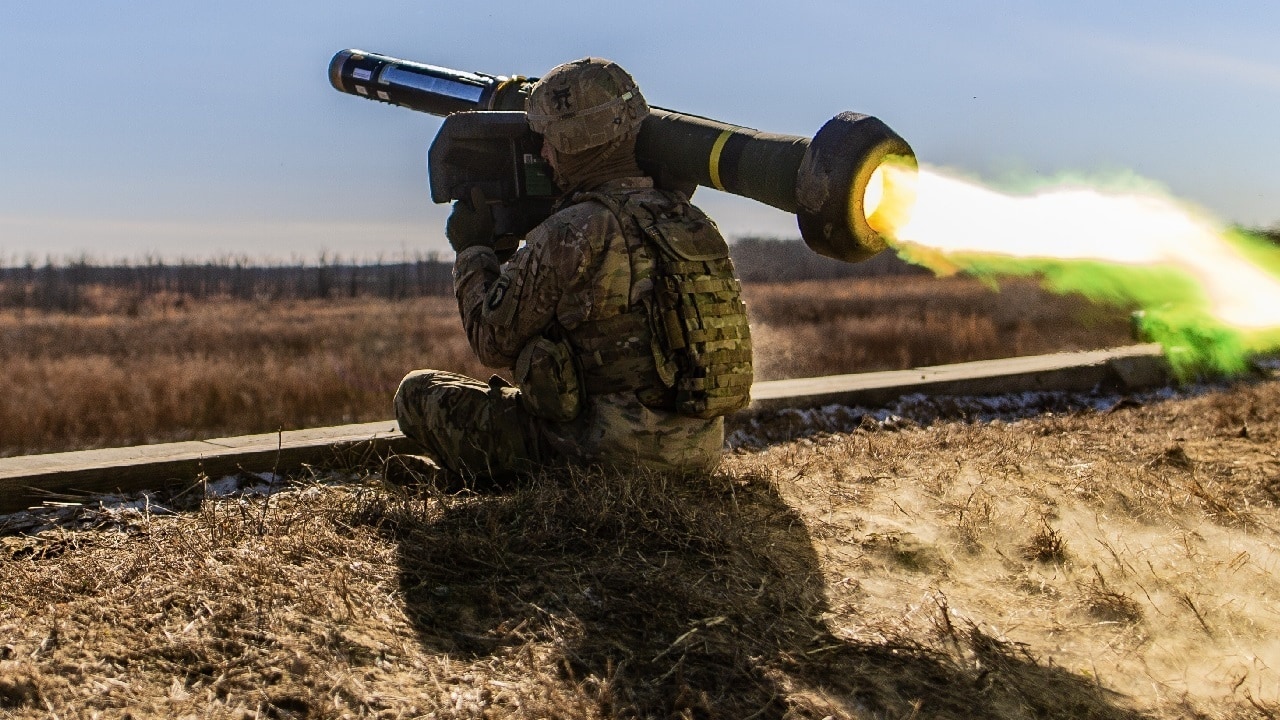A video shared by @Ukraine_WarNews from earlier this month highlighted the effectiveness of the U.S.-made FGM-148 Javelin.

Javelin anti-tank missile being fired along with a mortar. Image credit: UK government.
Though the video is less than 30 seconds long, it was recorded from multiple perspectives, including an overhead drone.
An operator from the Ukrainian Army’s 81st Airmobile Brigade can be seen perched on a hilltop, readying and then firing the man-portable anti-tank guided missile.
As soon as the weapon was fired, the soldier could immediately move from his position to avoid enemy counterfire.
An overhead unmanned aerial vehicle (UAV) recorded the Javelin striking a Russian T-72 main battle tank (MBT), which is seen smoldering as the video ends.
Fire and Forget
The FGM-148 Javelin is a “fire-and-forget” anti-tank weapon that was developed in the 1980s to replace the M47 Dragon anti-tank missile system that was in service with the U.S. military.
It utilizes automatic infrared guidance that allows the user to seek cover immediately after launch, as opposed to wire-guided systems that require the user to guide the weapon throughout the engagement.
Its HEAT (High-Explosive Anti-Tank) warhead can defeat modern tanks by striking them above, where the vehicle’s armor is the thinnest.
At the same time, it can also be used against fortifications in a direct attack fight. An additional benefit of the system is its advanced tandem warhead, which offers a target lock-on before launch and is able to penetrate armor equivalent to 600 to 800mm RHA (rolled homogeneous armor).
The Javelin also utilizes a so-called “soft launch,” which allows it to be fired safely from enclosures and covered fighting positions. A conventional rocket propellant ejects the warhead from the launcher, yet it stops burning before the missile actually clears the tube. Then a flight motor is ignited only after it sufficiently clears the operator.
It is a reusable system centered on its Command Launch Unit (CLU), which houses the optical sights and controls. The missiles are carried in a container that also acts as a single-use launch tube, and are then launched at an upward angle since the Javelin is a top attack weapon system. However, the Javelin uses a more direct line of flight against bunkers.
Combat History
The Javelin had been previously employed with great success in Afghanistan, Iraq, and Syria, and even before the war in Ukraine was considered to be effective against any tank in the world. Kyiv’s forces have simply confirmed that fact.
As of last summer, at least 5,000 Javelins had been sent to Ukraine, and as a result, Lockheed Martin announced last October that it would nearly double the production to 4,000 annually to ensure that American stockpiles are maintained.
Javelin destruction of a ???????? tank by ???????? soldiers of the 81st OAMBrpic.twitter.com/Azqu4UiMX0
— Ukraine War (@Ukraine_WarNews) April 3, 2023
In addition, efforts have been ramped up to produce the missiles for the weapon.
Ukrainian officials said in March 2022 that up to 500 missiles were being fired daily.
Author Experience and Expertise:
A Senior Editor for 19FortyFive, Peter Suciu is a Michigan-based writer. He has contributed to more than four dozen magazines, newspapers, and websites with over 3,200 published pieces over a twenty-year career in journalism. He regularly writes about military hardware, firearms history, cybersecurity, politics, and international affairs. Peter is also a Contributing Writer for Forbes and Clearance Jobs. You can follow him on Twitter: @PeterSuciu.

